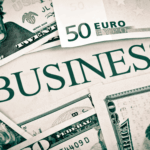The Schwab US Dividend Equity ETF, commonly referred to as SCHD, stands out as a significant player in the investment landscape with close to $70 billion in assets under management. Known for its robust dividend yield of 3.9%, this ETF caters to a diverse audience, including income-focused investors, retirees, and those adopting a conservative investment strategy. However, despite its impressive yield, the fund has struggled to achieve returns commensurate with broader market indices, highlighting an intrinsic dilemma for its investors.
Why Has SCHD Underperformed Despite Market Gains?
SCHD’s 0% return year-to-date contrasts vividly with the S&P 500 and Nasdaq, which are up 14% and 18%, respectively, in the same period. The underperformance largely stems from the ETF’s asset composition and portfolio restrictions. For instance, no single stock may comprise more than 4% of the index, thereby limiting exposure to high-performing stocks. Investments such as AbbVie, Lockheed Martin, and Cisco have shown substantial gains but are subject to trimming if they exceed this threshold.
Does Portfolio Composition Impact Performance?
The necessity to rebalance and trim successful stocks to adhere to portfolio guidelines can curb the potential for growth in sectors experiencing high performance. On the other hand, some holdings, including Target, PepsiCo (NASDAQ:PEP), and UPS, have faced significant declines this year, contributing to the ETF’s lackluster performance. These mixed results raise questions about the delicate balance between steady income and capital gains in managing such funds.
In the broader perspective of its five-year performance, SCHD has seen an increase of 39%. Yet this figure is overshadowed when compared to the S&P 500, which climbed 93% over the identical timeframe. This disparity places the dividend-oriented approach of SCHD at a potential disadvantage for investors aiming for market-level returns.
Evaluating past perspectives, SCHD has typically attracted investors prioritizing income stability over volatility. Historical review of performance patterns shows consistent yield delivery, even though it may sacrifice growth opportunities. This strategy, while beneficial for some, results in significant capital gains missed during bullish market cycles.
However, Schwab has maintained its commitment to balancing income generation with steady, albeit modest, growth.
“We design SCHD with disciplined rebalancing to meet our investors’ needs,” Schwab notes.
This approach caters primarily to investors who view income as their principal investment objective regardless of the differential with the broader index growth.
In conclusion, while SCHD offers attractive yields, its structural limitations can present significant challenges amidst robust market gains. Investors in this ETF should weigh the trade-offs between high dividend income and capitalization appreciation. Moreover, they should recognize the ETF’s composition as crucial to understanding potential future performance. Unpacking the dividend strategy against the backdrop of market trends reveals a nuanced landscape where income and performance trade-offs are balanced.










